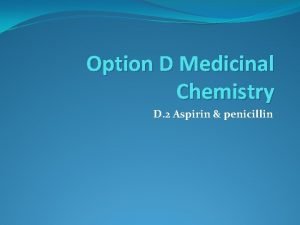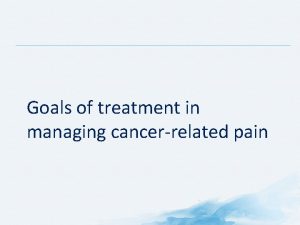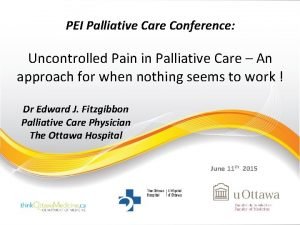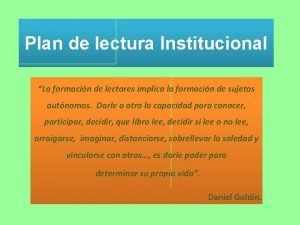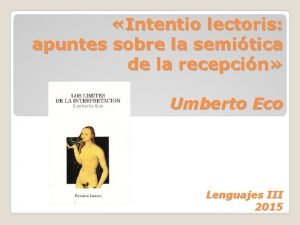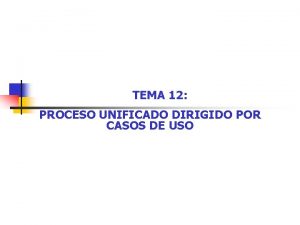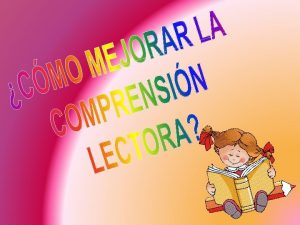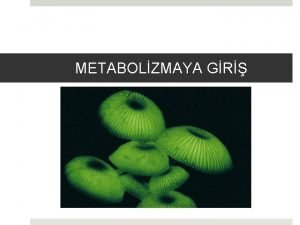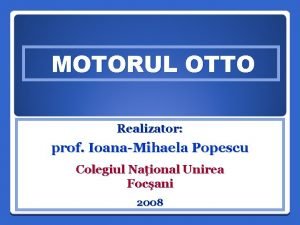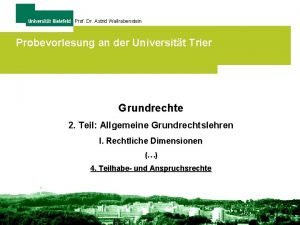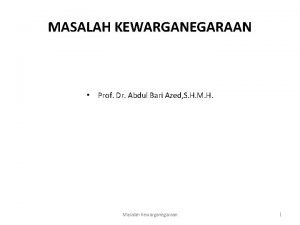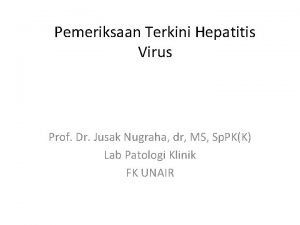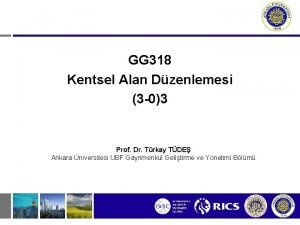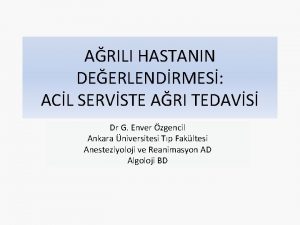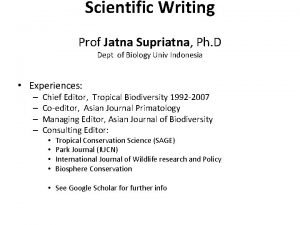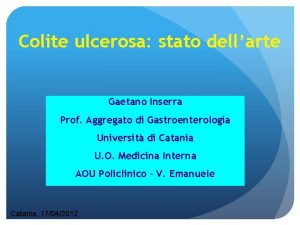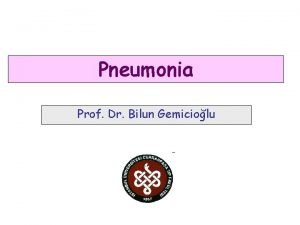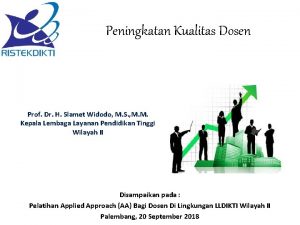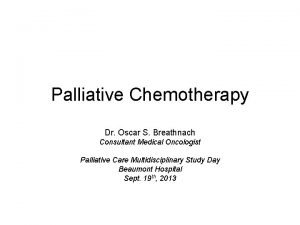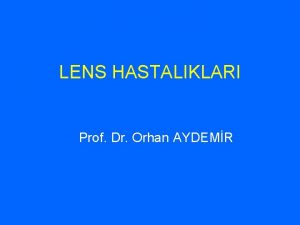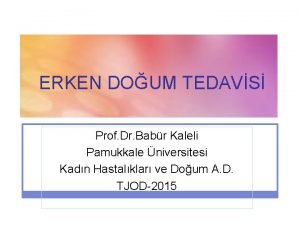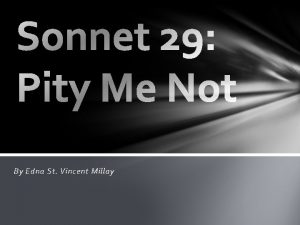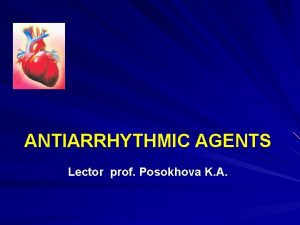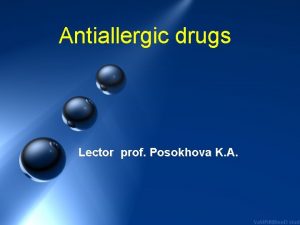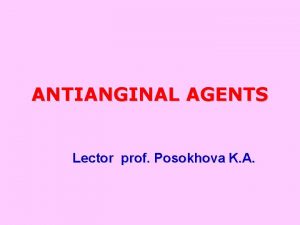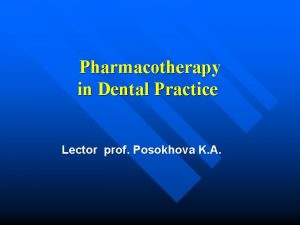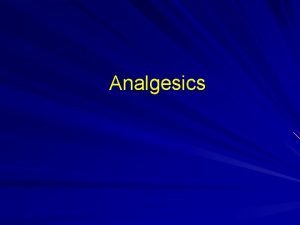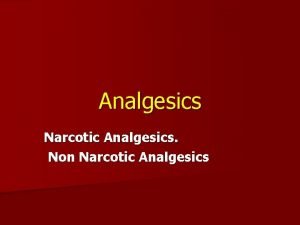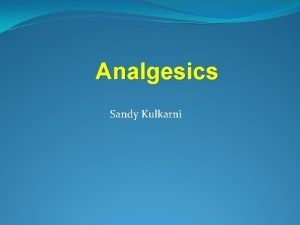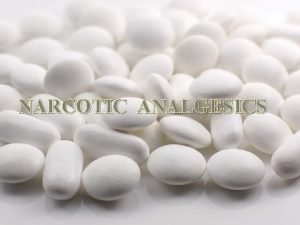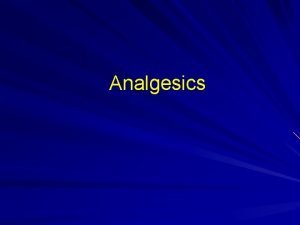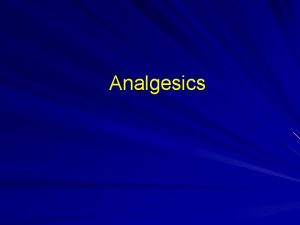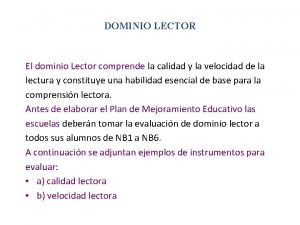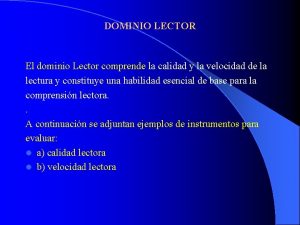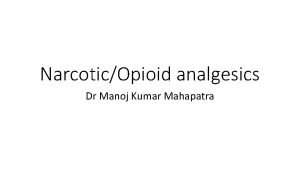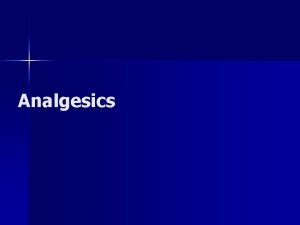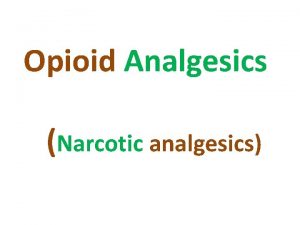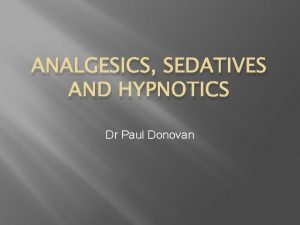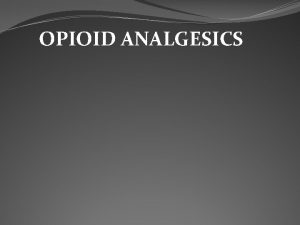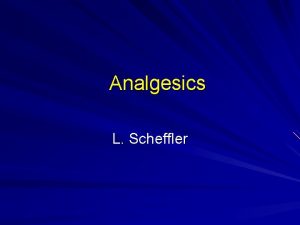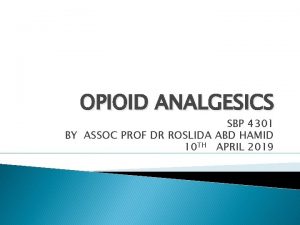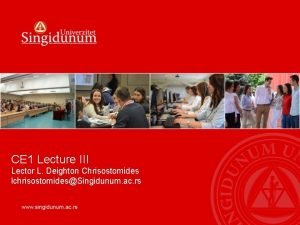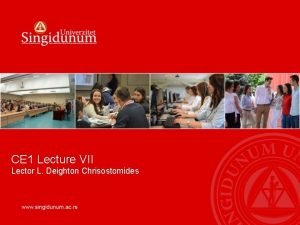ANALGESICS Lector prof Posokhova K A ANALGESICS I













































- Slides: 45

ANALGESICS Lector prof. Posokhova K. A.

ANALGESICS I. Opioid (narcotic) analgesics 1. Agonists of opioid receptors – morphine hydrochloride, promedol, omnopon, fentanyl, codein; 2. Agonists – antagonists and partial agonists of opioid receptors – pentasocin, buprenorphine. II. Nonopioid analgesics and nonsteroidal antiinflammatory drugs - NSAIDs acetysalycylic acid, paracetamol, analgin, indometacin, butadion, ibuprofen, pyroxicam, diclofenac-sodium, ketorolac, ketoprofen. III. Substances with mixed mechanism of action (opioid and nonoioid components) tramadole

OPIOID ANALGESICS

The following structures take part in perception of pain: thalamus, hypothalamus, reticular formation, limbic system, occipital and frontal areas of cortex System which conducts and perceives pain - nociceptive System which protects organism from pain – antinociceptive Visceral pain – from inner organs Somatic pain – from bones, muscles, joints, teeth, ligaments, nerves

Opioid system contains: • opioid receptors • endogenic opioid substances – endorphins, encephalines, dinorphines Subtypes of opioid receptors: mu, delta, kappa, epsilon, sigma

Subtypes of opioid receptors mu Analgesia, depression of breathing, euphoria, addiction development, sedative effect, depression of contents mocing through digestive tract, miosis kappa Analgesia, sedative eefect, psychotomimetic action delta Analgesia, euphoria, behaviour changes sigma Mania, increasing of breathing frequency, hallucinations, midriasis

Poppy 1. Papaver rhoeas L. 2. Papaver somniferum L. 1 2

"Among the remedies which it has pleased Almighty God to give to man to relieve his sufferings, none is so universal and so efficacious as opium. " Thomas Sydenham (1624 - 1689)

Morphine was first isolated by Friedrich Wilhelm Serturner in 1805. Sertürner named his discovery after Morpheus, the Greek god of dreams. Morpheus is the son of Hypnos, the god of sleep.

Morphine hydrochloride “mosaic action” on central nervous system Effects of depression • • analgesia decreasing of frequency and depth of breathing depressing of central links of coughing reflexes from the side of psychical activity – somnolence, retardness Effects of stimulation • vomiting (excitation of trigger zone of vomiting center) • bradycardia (increasing of tone of vagal nerve nuclei) • miosis (increasing of tone of n. oculomotorius nuclei) • euphoria (condition of full psychological wellness with pleasant emotional feelings and feelings of physical comfort) • increasing of activity of spinal cord intermediate neurons

ADMINISTRATION OF OPIOID ANALGESICS • • • prophylaxis and treatment of pain shock traumas burns acute myocardium infarction premedication for potentiation of action of narcosis drugs, analgesia in postoperative period • colics • to relieve sufferings of oncologic patients of 4 th clinical group (can’t be treated radically) • acute abdomen (strong pain in abdominal cavity, caused by perforation of ulcer, acute appendicitis, acute intestinal impassability etc. ) – only from the moment then diagnosis becomes clear

Morphine preparations

MORPHINE HYDROCHLORIDE routes of administration • subcutaneously and intramuscularly (analgesic action after 10 -15 min) • after oral administration – presystemic elimination ( 20 -60 % enters general blood circulation) • sublingually – quick absorption • into epidural, subarachnoidal • into brain ventricles Duration of analgesic action – 4 -6 hours Maximum single dose of morphine is 0, 02 g, maximum daily dose – 0, 05 g

Other cases of morphine administration • acute left-ventricular cardiac insufficiency (morphine promotes depression of tone of vaso-motor centers with dilation of arterioles and venules and decreasing of heart load) • traumas of thorax accompanied by cough (morphine depresses central links of coughing reflexes)

Side effects of morphine • addiction • vomiting (excitation of starting zone of vomiting center) • bradycardia (increasing of tone of n. vagus nuclei) • spasm of sphincters of gastro-intestinal tract accompanied by constipations • increasing of tone of smooth musculature of urinary and bile-excreting tracts (retentions of urination, bile stasis) • Bronchial spasm • tolerance

CONTRAINDICATIONS FOR ADMINISTRATION OF MORPHINE • pain that accompanies chronic diseases. In exceptional occasions it is introduced (not more than 1 -2 injections) in case of pain which threatens development of pain shock, for, example, acute attach of ulcer disease • children before the age of 2 years • for aged from 2 to 6 years and elderly the drug should be administered very carefully (breathing depression is possible) • pregnancy and lactation • anesthesia during child delivery (fetus breathing depression) • skull traumas, brain hemorrhages (increasing of intracranial pressure) • depression of function of breathing center, damage of respiratory organs, bronchial asthma

OMNOPON • contains mixture if opium alkaloids (48 -50% morphine) • does not cause spasms of smooth musculature, as it contains alkaloids of isoquinoline raw • is used for analgesia according to all the indications of morphine hydrochloride, for example, colics

Promedol • duration of analgesic action - 3 -4 hours • moderate spasmolytic influence on smooth musculature of internal organs • stimulation of rhythmic contractions of uterus • does not depress breathing • can be used for analgesia and stimulation of child delivery • in case of pain syndrome connected with spasms of smooth musculature

Phentanyl • synthetic opioid analgesic of short action • analgesic activity is 300 times higher than of morphine • analgesic effect after intravenous introduction – after 1 -3 min, lasts for 15 -30 min • used with a neuroleptic droperidol (complex drug – “talamonal”) for neuroleptanalgesia – a variant of general anesthesia

Phentanyl

Codeine • opium alkaloid • analgesic action is not strong, but anticough effect is considerable • administered as an anticough drug of central action • analgesic with weak activity combined with non-opioid analgesics (paracetamol) for potentiation of the effect

PARACETAMOL+CODEINE

Pentazocin • agonist-antagonist of opioid receptors • comparatively with morphine, it is a bit less dangerous in the aspect of addiction development • indicated in case of pain of medium intensity in such conditions like other opioid analgesics. In case of strong pain its administration is limited as in case of increasing of dose of the drug excitation appears • it can cause increasing of blood pressure and tachycardia that’s why it’s not advised to use in case of acute myocardium infarction • if it is administered for people with narcotic addiction manifestations of abstinence develop

Buprenorphine • Partly agonist of mu-opioid receptors • Acts longer than morphine (approximately 6 hours) • Analgesic activity is higher than of morphine, that’s why it’s used in doses of 0, 3 -0, 6 mg • In case of breathing depression, which it causes, naloxon is less effective since buprenorphine is slowly released from the connection with mu-receptors • Indicated for pain decreasing in the same situations as other narcotic analgesics • May be used for detoxication and supporting treatment of individuals who is addicted to heroine

Buprenorphine

Acute poisoning with opioid analgesics It is often observed in drug addicts death – from breathing depression SYMPTOMS dizziness nausea, vomiting (rarely), heavy sweating general weakness, somnolence, which after transfers into deep dream and coma pale and cyanotic skin, decreased body temperature weak pulse, decreased blood pressure rare and superficial breathing Triad in case poisoning with morphine Acute miosis pathological breathing of Chain-Stocks’ type saved tendon reflexes

Treatment of acute poisoning • • Naloxon (antagonist of opioid receptors) intravenously - 0, 4 -1, 2 mg general dose of naloxon should not overcome 10 mg stomach lavage (for morphine enterohepatic circulation is typical) with 0, 05 -0, 1% solution of potassium permanganate and 0, 5 % tannin solution suspension of 20 -30 g of activated charcoal salt laxative agents (sodium sulfate) forced diuresis atropine sulfate inhalation of carbogen (5 -7 % СО 2 and 93 -95 % O 2)

Naloxon antagonist of opioid receptors

All narcotic analgesics cause drug addiction – narcotic dependence Manifestations psychological dependence physical dependence tolerance abstinence syndrome

NON-OPIOID ANALGESICS

Types of action of non-opioid analgesics • Analgesic • Antipyretic • Anti-inflammatory (except paracetamol)

Mechanism of action of non-opioid analgesics • depression of cyclooxygenases activity • decreasing of prostaglandins synthesis in peripheral tissues and in central nervous system • decreasing of sensitivity of nervous endings and depression of transmission of nociceptive impulses on the level of CNS structures • pain-relieving action of non-opioid analgesics is partly connected with their anti-inflammatory activity

Indications for administration of non-narcotic analgesics • • headache toothache radiculitis neuritis, neuralgias myositits, myalgia arthritis, arthralgia pain, connected with pelvic organs (dysmenorrhea) for potentiation of their action – combinations paracetamol with codein, analgin with dimedrol, analgin with codein

Acetylsalicylic acid • Blocks cyclooxygenase irreversably • As antipiretic and analgesic drug – 0, 25 and 0, 5 g per time • As an antiinflammatory – 3 -4 g per day (for arthritis, myocarditis, pleuritis, bronchitis etc. • As platelets inhibitor - for prophylaxis of thrombusformation (in case of ischemic heart disease, thrombophlebitis etc. ) – daily dose – 80 -100 mg

Analgin (metamizol-sodium)

Baralgin (maxigan, spazmalgon, trigan) analgin+pitophenon hydrochloride+pheniverinium bromide • Ampoules tablets suppositories • Analgesic and spasmolytic activity

Paracetamol • analgesic and antipyretic drug • maximal effect if the drug is introduced orally – after 2 hours, lasts approximately for 4 hours • in case of durable administration of big doses – damaging of liver and kidneys, production of met-hemoglobin

Paracetamol • • • Tablets Suppositories Syrups Soluble tablets Capsules

PARACETAMOL

Panadol (paracetamol)

Ketorolak (ketanov) • according to analgesic activity it prevails over effect of acetylsalicylic acid, indometacin and equals to opioid analgesics • moderate anti-inflammatory, antipyretic and anti -aggregate effects • high effectiveness in case of pain in postoperative period, in oncology, during child delivery, traumas, colics • i. m. , i. v. introduction, orally NOT indicated for chronic pain syndrome

Ketorolak (ketanov)

Ketoprophen (ketonal) • strong analgesic, anti-inflammatory and antipyretic agent • administered in case of arthroses and arthritis, ancilizing spondilitis, pain of different genesis (after surgeries, in case of traumas, painful menstruations etc. ) • administered orally, intramuscularly, in forms of suppositories and ointments

TRAMADOL Analgesic activity is similar to the activity of morphine In case of intravenous administration effect develops after 5 -10 min, if administered orally – after 30 -40 min, action lasts for 3 -5 hours.

ADMINISTRATION OF TRAMADOL surgery, traumatology, gynecology, neurology, oncology For all kinds of acute and chronic pain of moderate and considerable intensity, including postoperative, traumatic pain neuralgias diagnostic and therapeutic interventions oncologic pathology Provokes dependence
 Analgesic classification
Analgesic classification Analgesics examples
Analgesics examples Mechanism of action of opioid analgesics
Mechanism of action of opioid analgesics Objetivos de un lector
Objetivos de un lector Qué es un plan lector
Qué es un plan lector Texte demi lune lector lectrix
Texte demi lune lector lectrix Lector lectrix l'homme à l'oreille coupée
Lector lectrix l'homme à l'oreille coupée Aqu professor lector
Aqu professor lector Intentio lectoris
Intentio lectoris Lector vs lecturer
Lector vs lecturer Lector de tarjetas
Lector de tarjetas Simicole
Simicole Conclusiones del plan lector
Conclusiones del plan lector Ejemplo de estructura no rígida en literatura
Ejemplo de estructura no rígida en literatura Quehaceres del lector
Quehaceres del lector Pruebas de dominio lector
Pruebas de dominio lector Prueba de dominio lector fundar
Prueba de dominio lector fundar Dominio
Dominio Lector modelo definicion
Lector modelo definicion Fases del proceso unificado de desarrollo de software
Fases del proceso unificado de desarrollo de software Tepe kaynak
Tepe kaynak Randamentul motorului otto
Randamentul motorului otto Prof tan malaka
Prof tan malaka Prof eco
Prof eco Mića jovanović
Mića jovanović Rolf schaefer kanzlei für arbeitsrecht hannover
Rolf schaefer kanzlei für arbeitsrecht hannover Prof.dr.yesari karter kimdir
Prof.dr.yesari karter kimdir Prof. dr. cem ficicioglu
Prof. dr. cem ficicioglu Prof. dr. astrid wallrabenstein
Prof. dr. astrid wallrabenstein Abdul bari azed
Abdul bari azed Prof jusak nugraha
Prof jusak nugraha Prof dr tayfun oktar
Prof dr tayfun oktar Gg prof
Gg prof Prof dr enver özgencil
Prof dr enver özgencil Prof jim inc
Prof jim inc Prof jatna supriatna
Prof jatna supriatna Inserra gaetano gastroenterologo catania
Inserra gaetano gastroenterologo catania Prof. dr. bilun gemicioğlu
Prof. dr. bilun gemicioğlu The grammar translation method advantages and disadvantages
The grammar translation method advantages and disadvantages Prof slamet widodo
Prof slamet widodo Prof oscar breathnach
Prof oscar breathnach Arka kapsül kesafeti
Arka kapsül kesafeti Mehmet kıyan
Mehmet kıyan Tokoliz kontrendikasyonları
Tokoliz kontrendikasyonları Sonnet 29 edna st vincent millay poem
Sonnet 29 edna st vincent millay poem Professor robert galavan
Professor robert galavan
